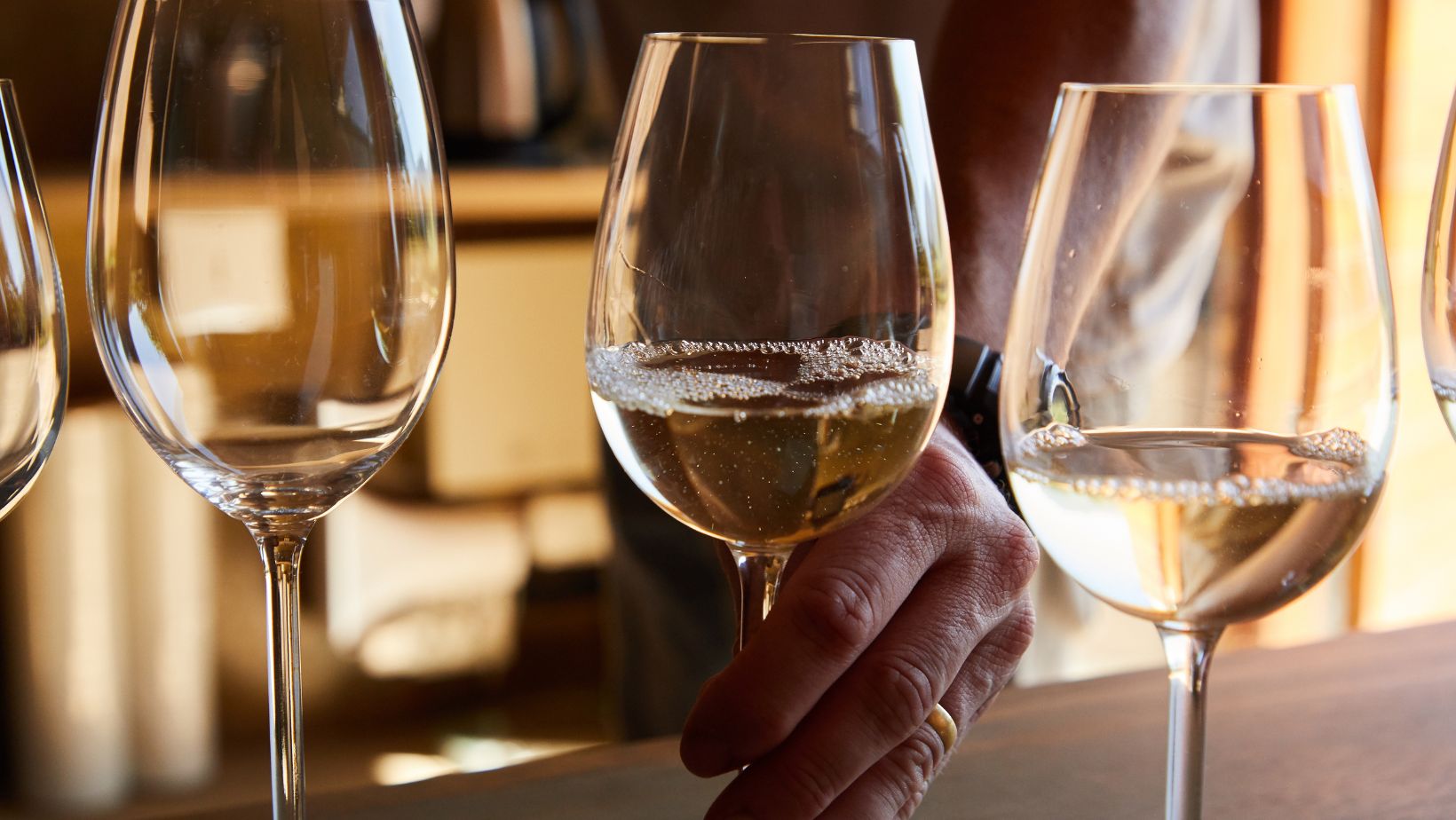
What Makes Chardonnay the Most Versatile White Wine on the Shelf?
I. Introduction
A. What is Chardonnay Wine
Chardonnay wine is a popular white wine variety known for its wide range of styles and flavors. It is made from the Chardonnay grape, which originally comes from the Burgundy region in France. This grape is grown in many wine regions worldwide, including the United States, Australia, and Chile. What is Chardonnay wine? At its core, it is a white grape wine that can be produced in many ways, resulting in a variety of tastes, aromas, and textures. This flexibility allows winemakers to craft Chardonnay wines that suit different preferences, from light and crisp to rich and full-bodied.
Because Chardonnay is such a versatile grape, it is often used as a base for other wines as well, including sparkling wines like Champagne. The grape’s ability to adapt to different climates and winemaking styles means that each bottle of Chardonnay can offer a unique experience. For wine lovers, this means there is always something new to discover in Chardonnay wine.
B. Popularity Among White Wine Types
Among all white wine types, Chardonnay stands out as one of the most popular and widely enjoyed. It has earned its reputation as one of the best white wines thanks to its accessibility and diverse flavor profiles. Whether you prefer a dry, crisp wine or something richer and more buttery, Chardonnay has an option that fits your taste. Its popularity is also boosted by its presence in restaurants and wine stores worldwide, making it an easy choice for both casual drinkers and wine enthusiasts.
This wide availability and adaptability have helped Chardonnay maintain its position as a top-selling white wine globally. Its appeal cuts across different demographics, and it often serves as a go-to option for people looking to explore white wines. The popularity of Chardonnay reflects not only its quality but also its ability to suit many different occasions and meals.
C. Why Versatility Matters
The versatility of Chardonnay wine is what truly makes it special. A wine that can be paired with a variety of foods and enjoyed in many settings is highly valuable. For example, some white wines are best suited only for light meals or warm weather, but Chardonnay’s broad flavor range means it works in multiple contexts. This flexibility is important for both consumers and winemakers because it ensures the wine remains relevant and appealing.
Versatility also means that Chardonnay can cater to a wide range of preferences. Some people enjoy a dry, unoaked Chardonnay white wine, while others prefer the richer texture that comes from oak aging. The ability to produce different styles means that Chardonnay can satisfy wine drinkers with very different palates, making it one of the most adaptable and beloved white wines on the shelf.
II. Chardonnay Characteristics That Stand Out
A. Chardonnay Flavor Profile
The Chardonnay flavor profile is diverse and changes depending on where and how the wine is made. In cooler climates, Chardonnay wines tend to have more crisp and bright fruit flavors such as green apple, pear, and citrus. These versions often showcase a clean, refreshing taste that highlights the grape’s natural acidity. On the other hand, Chardonnay from warmer climates typically has riper fruit flavors like peach, melon, and tropical fruits such as pineapple and mango.
This wide range of flavors is one reason why Chardonnay is considered one of the most versatile white wine types. Its ability to reflect the climate and winemaking techniques means you can find a Chardonnay that suits your personal taste. Whether you prefer something light and refreshing or more full-bodied and fruity, there is a Chardonnay flavor profile that fits the bill.
B. Chardonnay Tasting Notes
When tasting Chardonnay wine, you may notice a variety of aromas and textures depending on the style. Dry Chardonnay white wine typically offers tasting notes of green apple, lemon zest, and sometimes a hint of minerality. These unoaked versions emphasize freshness and acidity, making them crisp and clean on the palate. In contrast, oaked Chardonnay wines often include tasting notes like vanilla, butter, toast, and baking spices, which come from the aging process in oak barrels.
The mouthfeel also varies between styles. Unoaked Chardonnays tend to be lighter and more delicate, while oaked versions feel richer and creamier. These tasting notes provide a full sensory experience that appeals to many wine drinkers and help explain why Chardonnay wine is so popular.
C. Dry vs Oaked Styles
One of the biggest factors in Chardonnay’s versatility is the difference between dry and oaked styles. A dry Chardonnay white wine is typically unoaked or lightly oaked, focusing on the grape’s natural acidity and fruit flavors. This style pairs well with light and fresh foods and appeals to those who enjoy a crisp, clean wine. Dry Chardonnay is a favorite for many because it is refreshing and easy to drink.
On the other hand, oaked Chardonnay wine undergoes fermentation or aging in oak barrels, which imparts additional flavors like vanilla, butter, and toast. These wines tend to be fuller-bodied and more complex. The oak softens the acidity and gives the wine a creamy texture that some wine lovers find very appealing. Whether you prefer dry or oaked Chardonnay, both styles offer unique experiences that cater to different tastes and occasions.
III. Why Chardonnay White Wine (Dry or Not) Works for Everyone
A. Old World vs New World
Chardonnay’s appeal is also influenced by whether it comes from the Old World or New World wine regions. Old World Chardonnay, such as those from Burgundy in France, is often more restrained and mineral-driven. These wines tend to have higher acidity, subtle fruit flavors, and a strong sense of place, or terroir. They typically lean towards a drier style, with more focus on elegance and balance.
In contrast, New World Chardonnays, like those from California or Australia, are generally bolder and fruitier. These wines often showcase ripe tropical fruits and can be more heavily oaked, resulting in a richer, creamier mouthfeel. This contrast means that Chardonnay can suit a variety of palates, whether you enjoy a more classic, restrained style or a lush, fruit-forward wine.
B. Unoaked Chardonnay Appeal
Unoaked Chardonnay is especially popular among those who prefer a fresh and vibrant white wine. Without the influence of oak, this style emphasizes the pure fruit and mineral qualities of the grape. Unoaked Chardonnay white wine dry versions often have crisp acidity and clean flavors that make them very food-friendly. Many wine drinkers appreciate this style for its simplicity and elegance.
Because unoaked Chardonnay is lighter and less complex, it is perfect for casual occasions or warm weather. It pairs well with light dishes and can be enjoyed on its own as a refreshing aperitif. Its appeal lies in its straightforward expression of the Chardonnay grape, making it accessible to many people.
C. Chardonnay vs Sauvignon Blanc
Chardonnay vs Sauvignon Blanc is a common comparison when choosing a white wine. While both are popular white wine types, they have very different profiles. Sauvignon Blanc is known for its high acidity, bright citrus, and herbaceous flavors such as grass and green bell pepper. It tends to be lighter-bodied and more sharply focused than Chardonnay.
Chardonnay, on the other hand, offers more variation in flavor and body. It can be dry or oaked, light or full-bodied, making it a more versatile choice. For those who enjoy white wines with a creamy texture and layered flavors, Chardonnay is often preferred. For a crisp, zesty, and aromatic experience, Sauvignon Blanc is the go-to. This variety in style between the two makes Chardonnay a more adaptable option for different occasions and food pairings.
IV. Chardonnay Wine Pairing Ideas That Actually Work
A. Seafood and Chardonnay
One of the classic pairings for Chardonnay wine is seafood. Whether you are enjoying grilled fish, shellfish, or delicate sushi, Chardonnay white wine dry versions complement these dishes beautifully. The wine’s acidity helps cut through the natural oils and richness of seafood, enhancing the flavors of both the wine and the dish.
Especially unoaked Chardonnays with bright citrus and green apple notes work well with lighter seafood dishes like oysters, scallops, or white fish. Meanwhile, oaked Chardonnay can pair nicely with richer seafood options like lobster or crab that have buttery sauces. This range of pairing options shows why Chardonnay is such a versatile food companion.
B. Cream-Based Dishes
Chardonnay also shines when paired with cream-based dishes. The buttery and creamy texture of oaked Chardonnay matches perfectly with sauces like Alfredo or dishes with heavy cream and cheese. The wine’s smooth mouthfeel and subtle oak flavors complement the richness of these foods without overwhelming the palate.
Dishes such as chicken in cream sauce, creamy pastas, and even rich risottos can benefit from a glass of Chardonnay wine. This pairing brings balance to the meal by enhancing the wine’s natural creaminess while softening the heaviness of the food. For lovers of rich, comforting cuisine, Chardonnay wine pairing offers a delicious solution.
C. Cheese and Chardonnay
Cheese and Chardonnay is another classic combination that wine lovers enjoy. The wide flavor spectrum of Chardonnay makes it suitable for many different types of cheese, from soft and mild to harder varieties. Unoaked Chardonnay pairs well with fresh cheeses like mozzarella or ricotta, thanks to its bright acidity and fresh fruit notes.
Oaked Chardonnay, with its buttery character, is a great match for richer cheeses such as Brie, Camembert, and mild Cheddar. The wine’s creamy texture complements the smoothness of the cheese, creating a harmonious tasting experience. This makes Chardonnay a reliable choice for cheese boards and social gatherings.
V. Conclusion
Chardonnay is undoubtedly one of the most versatile white wines on the shelf. Its broad range of flavor profiles, from crisp and dry to rich and oaked, makes it suitable for many different tastes and occasions. Whether you are a fan of dry Chardonnay white wine or prefer a fuller-bodied style, this grape variety offers something for everyone.
Its ability to pair well with a variety of foods, including seafood, cream-based dishes, and cheese, further cements Chardonnay’s reputation as the best white wine choice. The differences between Old World and New World Chardonnays, as well as the comparison with Sauvignon Blanc, highlight its adaptability. For those looking to explore white wine types, Chardonnay remains a reliable and rewarding option.




